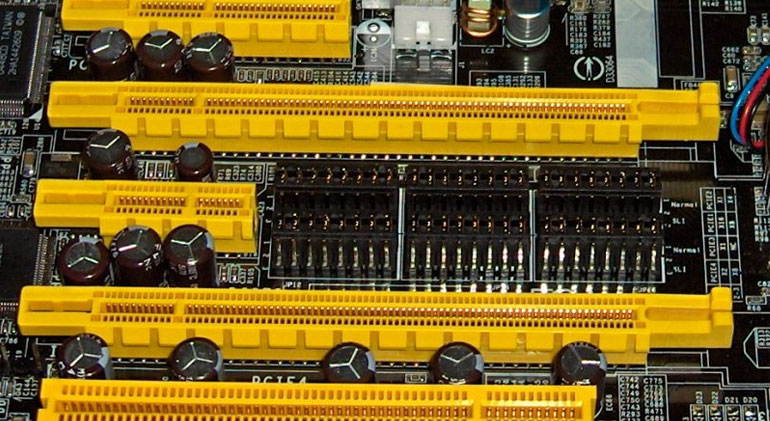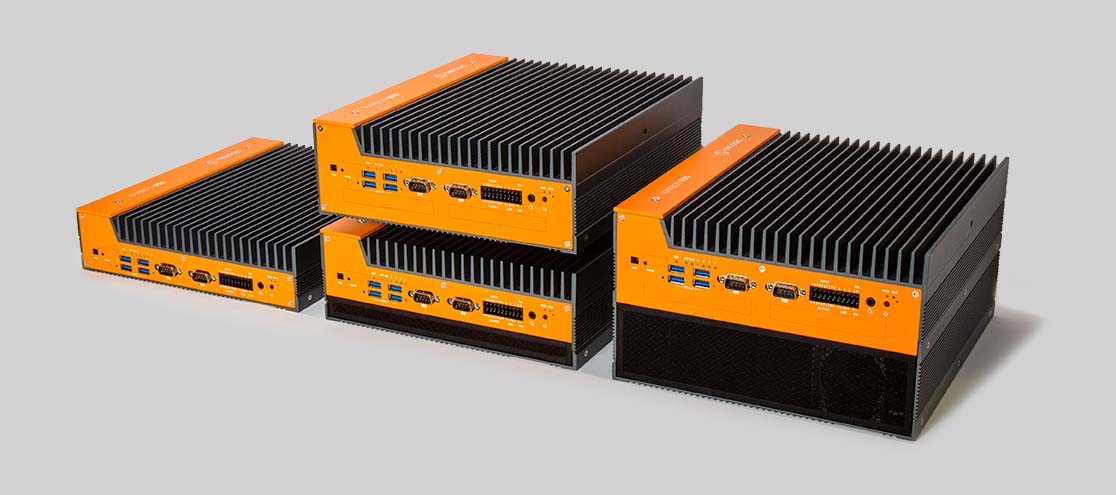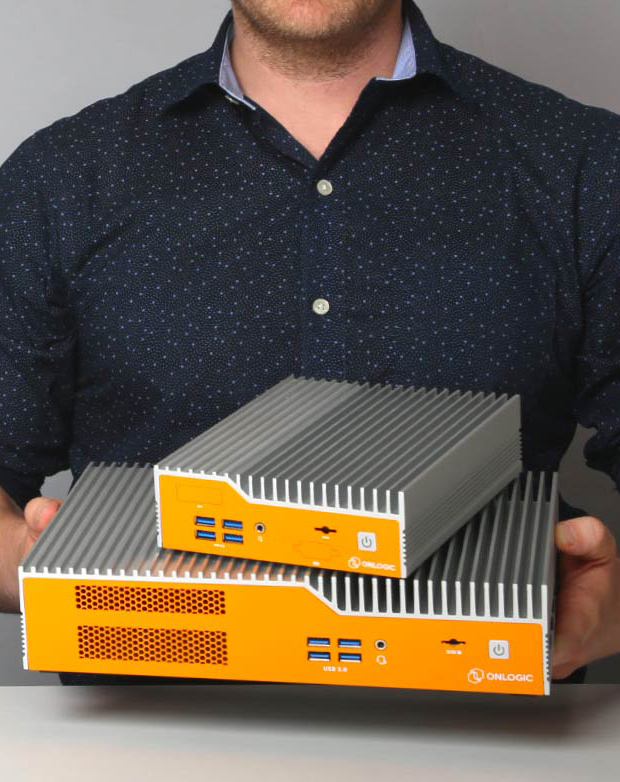Your Ultimate Guide to Understanding PCIe 4.0
Is PCIe 4.0 worth the upgrade?
PCIe 4.0, often referred to as PCIe Gen 4 and sometimes just PCI 4.0, is the fourth version of a widely used, high-speed interface for computer peripherals. Since nothing ever seems to be quite fast enough when it comes to technology, it’s no surprise that PCIe has been talked about – a lot. But with a lot of conversation comes a lot of misconceptions and outstanding questions.
What is PCIe 4.0? How is it different from previous generations like PCIe 3.0? Is PCIe Gen 4.0 backwards compatible with 3.0? What about the newer generations PCIe 5.0 and PCIe 6.0? We’re here to help answer all of your questions.
To learn more about PCI express in general, be sure to check out our video, PCIe Basics in 60 Seconds.
PCIe 3.0 vs PCIe 4.0: what are the main differences?
Simply put, PCIe Gen 4 has double the throughput of PCIe 3.0. This is true for every new generation of PCIe.
- PCIe 3.0 data transfer rate = 8GT/s (Gigatransfers per second) per lane
- PCIe 4.0 data transfer rate = 16GT/s per lane.
The maximum number of lanes with PCIe Gen 4.0 is 16 (same as Gen 3.0). That allows for up to 16 Lanes at 16GT/s per lane. That means: 16Lanes x 16GT/s = 256GT/s per device!
Note: GT/s is the rate of bits (0’s and 1’s) transferred per second that get transmitted from the host to the end device or endpoint.
While the two PCI express standards are electrically and mechanically very similar, to enable higher data transfer rates sometimes there are material changes required on the motherboard, which may drive additional cost for Gen 4.0.
Let’s look at a real world example of a graphics card (GPU) operating at PCIe 3.0 and PCIe 4.0.
- Industry standard GPUs use 16 PCIe lanes.
- Your peak theoretical bit rate via PCIe 3.0 would be:
- 16 Lanes x 8(GT/s/ Lane) = 128GT/s.
- Your peak theoretical bit rate via PCIe 4.0 would be
- 16 Lanes x 16(GT/s/Lane)= 256GT/s
- Your peak theoretical bit rate via PCIe 3.0 would be:
The importance of PCI express encoding
Understanding the encoding technique is necessary to determine the actual amount of data that can be transferred. Both PCIe Gen 3.0 and PCIe Gen 4.0 use a 128b/130b encoding technique. This encoding technique transforms 128-bit data into 130-bit line code. On the other hand, older generations such as PCIe Gen 1.0 and PCIe Gen 2.0 use 8b/10b encoding, which is less efficient.
While 128b/130b encoding is vastly more efficient than 8b/10b, there is still some bandwidth impact of approximately 1.54%. Effectively this means that the maximum theoretical bandwidth in Gbps (Gigabits per second) of each PCIe Gen 4.0 lane is as follows:
16GT/s – (16GT/s x 1.54%) =15.975Gbps ( or ~2GB/s)
The increase in bandwidth enables faster data transmission between the PCIe root ports (like those included in the Intel W680 or AMD X570 chipsets) and the endpoints (such as an SSD or a GPU). Additionally, support for PCIe 4.0 has also driven a necessity for new low-loss dielectric materials in motherboard designs to accommodate for higher speed signals to propagate through printed circuit boards (PCBs).
How does the generation affect my choice of GPU and SSD (including NVMe SSD)?
Every generation of PCIe is forward and backward compatible but they’ll perform to the lowest specification. For example, if you connect a PCIe 3.0 expansion card to a PCIe 4.0 slot, the card will perform to the PCIe 3.0 specs.
PCIe Gen 4 offers another key advantage in addition to its higher bandwidth outlined above – you may not need as many lanes. For example, devices requiring up to 100 Gbps of bandwidth only require 8 lanes with PCIe 4.0 compared to 16 lanes with the older PCIe 3.0.
If you are buying chipsets supporting PCI Gen 4.0, here’s how it will affect your choice and use of GPU and SSD:
GPU
Due to the forward and backward compatibility, a PCIe 3.0 GPU will perform like a PCIe 3.0 GPU card if connected to a PCIe 4.0 (or in the future, a PCIe 5.0 or 6.0) slot. The specs of your GPU card do not change. However, a PCI express 4.0 capable GPU, such as an Nvidia RTX A2000 or A4000 will benefit from quicker transfer of the data being loaded on the GPU’s memory and decreased latency of the PCIe bus.
As machine learning (ML) and artificial intelligence (AI) applications continue to increase in complexity, and require larger data sets, the newer PCIe generations will play key roles in reducing compute time and improving performance.
SSD
Connecting a SSD to PCIe 4.0 can result in higher data transmission rates and lower latency. The forward-backward compatibility still applies, so you can connect any SSD Gen to the PCIe 4.0 interface and the speed will be determined by the PCIe SSD’s controller generation. This has a major impact on SSD read and write speeds and the latency required to retrieve or write the data. Check out our blog all about the different internal computer storage types and communication protocols for storage devices including NVMe which is only supported via PCIe to learn more.
Which processors support PCIe 4.0?
For those looking to take advantage of the most throughput, the following processors support PCI Express 4.0:
- 11th Gen Core Processors by Intel
- 12th Gen Core Processors by Intel
- 13th Gen Core Processors by Intel
- 3rd Gen Xeon Scalable Processors by Intel
- 4th Gen Xeon Scalable Processors by Intel
- Ryzen 3000,5000, and 7000 Series Processors by AMD
- EPYC 7002, 7003, and 9004 Series Processors by AMD
Industrial computers available with PCIe 4.0
OnLogic has many options of industrial and rugged computers that can be configured with PCI express 4.0 including:
The Karbon 800 Series of rugged computers are engineered to power your machine learning, artificial intelligence, advanced manufacturing and automation innovations.
The Helix 400 Series offers compact versatility. Its small form factof make it an ideal choice for space constrained installation, especially for the edge.
Our newest Rackmount Edge Server, the Axial AC101 leverages Intel 13th gen Core processors. It offers a full-height, full-length PCIe slot with Gen 4.0 which can be used to integrate high-end Graphics Processing Units (GPUs) to handle AI and automation workloads at the edge.
Should I wait for PCIe 5.0 or PCIe 6.0?
One common misconception is that PCIe 5.0 and PCIe 6.0 are “just around the corner”. While PCIe 5.0 and PCIe 6.0 specs are currently available, it will take a while for the endpoints to reach the market and the systems, particularly industrial systems, to support them.
Want to learn more about the newest standards? Check out our Ultimate Guide to PCIe 5.0 and and our Ultimate Guide to PCIe 6.0.
If you have any questions about PCIe 4.0, reach out to our technical team.
Note: We originally posted this blog on Feb 25, 2020. We updated it for content on June 05, 2023.
Get the Latest Tech Updates
Subscribe to our newsletters to get updates from OnLogic delivered straight to your inbox. News and insights from our team of experts are just a click away. Hit the button to head to our subscription page.
Share
More Articles
OnLogic Industrial Computers
Discover OnLogic's multitude of industrial computers that will help you to advance your IoT project
Learn more at OnLogic.com
OnLogic Industrial PCs: Designed to last. Built to order. Delivered in days. Visit our online store at OnLogic.com










